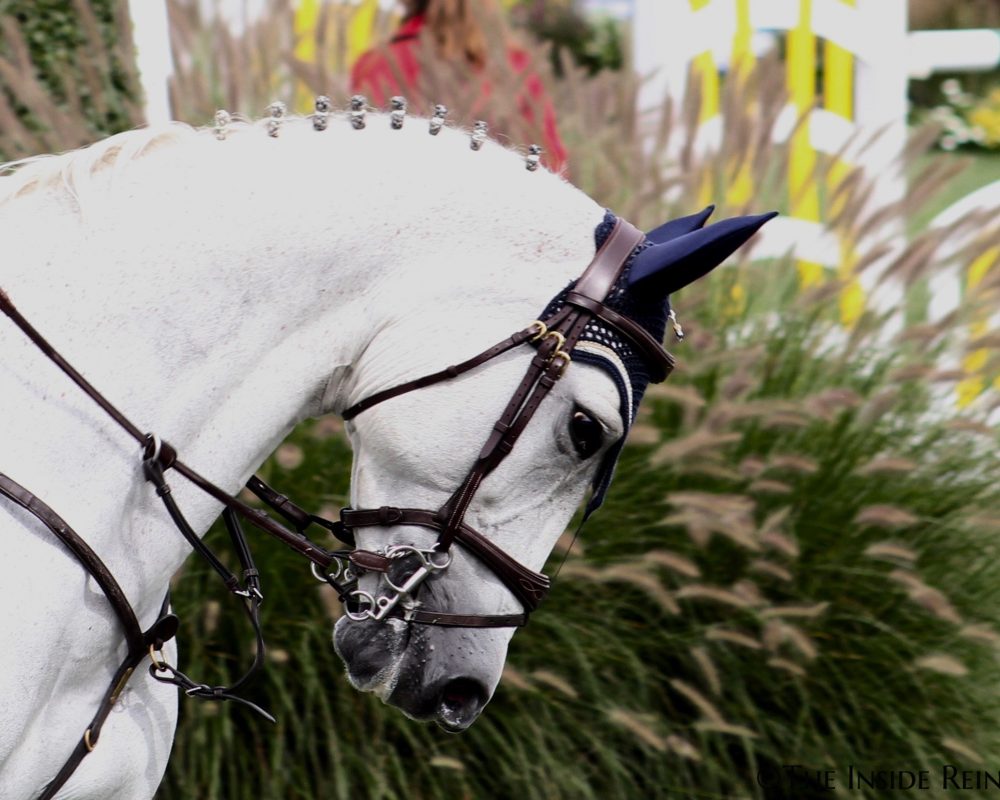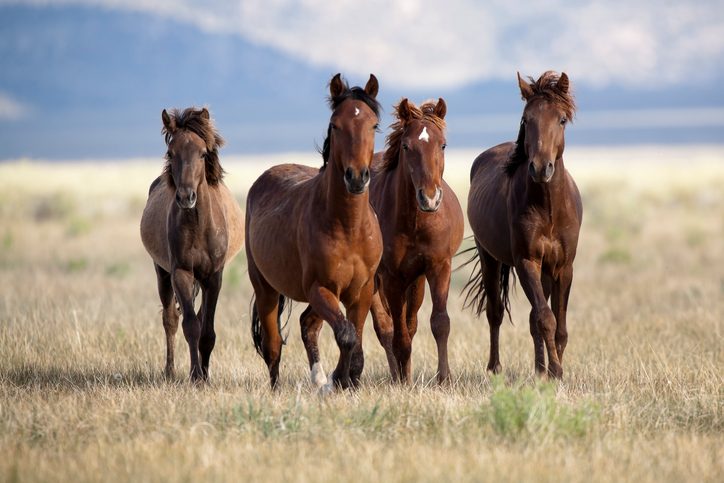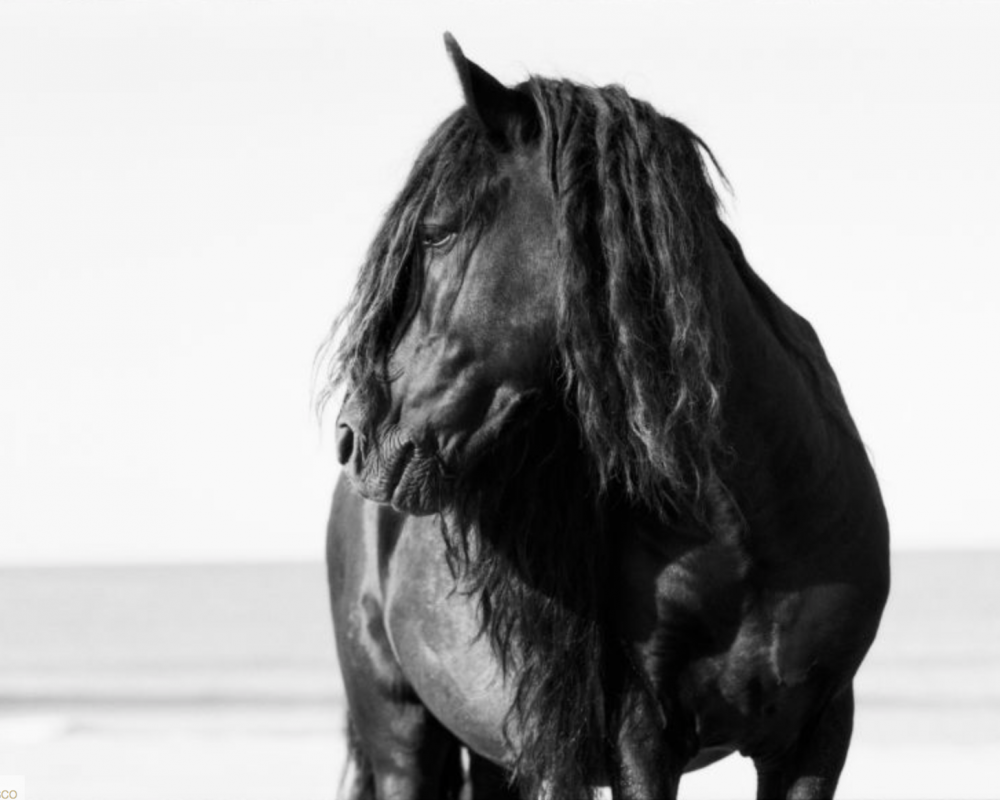This week’s Monday Night Movie is Dartmoor Ponies: The Final Round Up, an 11-minute documentary by filmmaker Kathy Stringer.
Dartmoor - a lush moorland located in southern Devon, England - is home to a famous herd of ponies aptly called the Dartmoor ponies. These ponies, once in high-demand, now face the same stark reality as so many wild horses today: growing population size, dwindling demand, and competition over grazing space.
In the film, Stringer explores the issues facing these historic ponies. She interviews a life-long pony keeper struggling to manage his herd, as well as individuals fighting to preserve the famous ponies in this short but informative documentary.
Dartmoor Ponies: The Final Round Up was featured at the Equus Film Festival and the Silver Springs International Film Festival. Watch the film here then read our interview with Ms. Stringer below!
What was your first experience with the Dartmoor Ponies?
The first time I ever went to Dartmoor was in January 2015. I was very excited to see for myself what the ponies looked like in their environment, and how easy or difficult it would be, to spot them. It turns out, they’re very easy to find as there aren’t many other animals on Dartmoor, similar in size. We soon found a small herd of ponies close to the side of the road, so pulled over to take some pictures. Almost instantly they were walking over to us and sniffing at our camera equipment - they were so friendly! One of these ponies was particularly affectionate and one morning we found him stood outside our accommodation nibbling on the flowerbed. I think he wanted a starring role in the film…
In your film, it is mentioned that demand for the ponies has decreased. What has caused this decrease and what purpose are the ponies typically used for?
The Dartmoor pony was used in medieval times for carrying heavy loads of tin from the mines across the moor. They then began to breed the Dartmoor pony with Shetland ponies so that they would keep their hardiness and strength, but be a more suitable size for the mines. When the mines all closed, the ponies were simply turned out on the moor. Some were then used to transport prisoners around Dartmoor, or sold on for meat. In more recent years, the live export of animals has been banned and so the demand for pony meat has significantly declined. This has had a huge effect on the ponies because although they are used as children’s riding ponies, the market is now saturated and without the meat route, the farmers are struggling to find a purpose for all of them. This is why they need to be managed better because the market won’t be so saturated and the foals born, will all have a purpose.
Steve Alford was quite forthcoming about his issues managing the ponies. Are other pony keepers as open or is it more of a dirty secret they don’t discuss?
It is difficult for me to comment on this as I didn’t meet many other pony keepers. However I will say that the general public in the UK don’t seem to be aware of the issues on Dartmoor, the ponies are just regarded as a tourist attraction to many.
Various breeding control methods were discussed in your film. Do you see any of these as viable options? There is a big debate going on in the U.S. about this regarding our mustang herds.
This debate is a really tough one to comment on. Personally, I believe that removing the stallions seems like the most viable option. By removing the stallions, you remove the risk of unwanted foals as the farmers can control when, and for long, their stallion is with their herd. If they don’t want any foals, they can keep their stallion away altogether. Although there is still a risk of one’s stallion covering a mare from a different herd, it is a significantly smaller risk, and less likely to occur. The dart gun option, I believe, is the least viable. There are so many negatives, for example, if the dart isn’t collected from the pony after it has been shot, it will fall onto the ground where it is likely to be stood on by other livestock, or worse, tourists visiting the area. However, I don’t have the results from the dart gun tests, therefore I am not in a position to say how successful/unsuccessful the dart gun option is.
Grazing rights were also discussed, the ponies being pushed off land for sheep herds etc., often for financial reasons. Do you see a way the herds can co-exist?
I think once the numbers of ponies are at a manageable level, the herds will be able to co-exist. The fact that the ponies eat different plants to the cows and sheep and are much hardier, means that they inhabit and graze in different areas of the moor. Without the ponies, areas of the moor would simply become overgrown and unpleasant.
What was the filmmaking process from inception to completion?
I first read about the story in November 2014 and the headline of the article read ‘Eat Ponies to Save Them’ which of course, caught my eye straight away. It was then that I decided to make a film about the subject and began doing my research. It was only during the time that I started to contact my contributors, that I realised that the story was much deeper and much more complex than what the papers had reported. The history, the culture, the people and their way of life; it was all on the line. None of this had been mentioned in the papers and that’s when my angle on the whole story changed.
Once I had finalised my shot lists and storyboarded everything, I packed up the camera gear and headed for the moor. The crew consisted of just my partner and myself - I wanted to keep it small so that there were less distractions! Filming on the moor went really well. We were so lucky with the weather as quite often it’s wet and foggy but we only had one day where the visibility was bad. I had a plan to do all of my interviews outside and I was told by everyone that I was crazy…but somehow the weather was on our side that week! When I had all of the shots I needed, I headed back to Bristol and started putting the film together. As filming had gone well, the editing and post production wasn’t too far from what I had planned! It took a couple of months to edit it all, have the music composed (by the lovely Amy Collins!) and finalise the trailer and all the other bits and pieces that go with making a film!
What other projects do you have in the pipeline?
I have been extremely lucky and off the back of producing this film, have managed to land a job with Equine Productions, a production company dedicated to producing films for all equine-related industries! I hope to make lot’s of exciting and inspiring films with them over the next few years, but on a more personal level, I would like to make a film about every native pony in the UK. There is also some footage leftover from my Dartmoor filming which I would like to edit together at some point!
Do you think the Dartmoor ponies will still be around in 50 years? 100?
Yes, I have no doubts that Dartmoor will always have ponies inhabiting it. As the iconic emblem of the moor, and having shaped the land and environment for centuries, I don’t think anybody would allow the ponies to disappear completely.
For more information on the Dartmoor Ponies click here and be sure to check out the film’s Facebook page here.



Leave a Reply